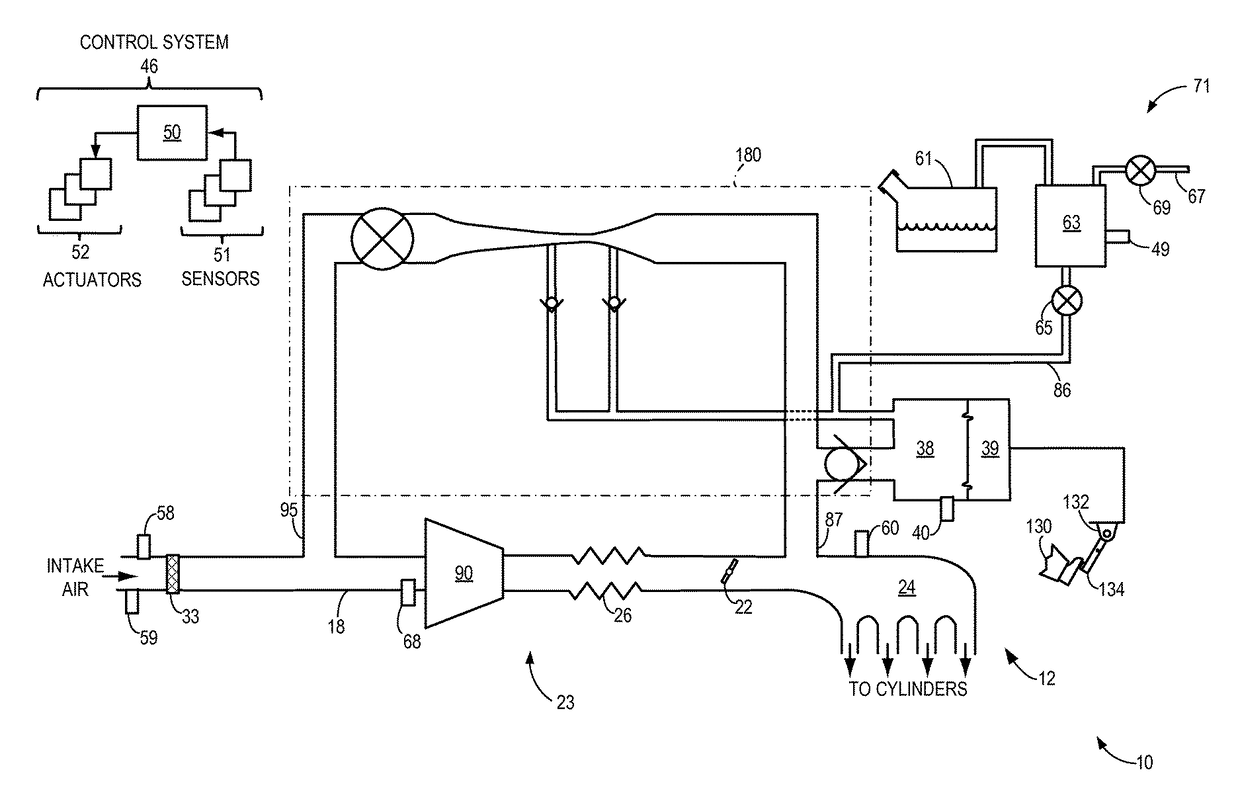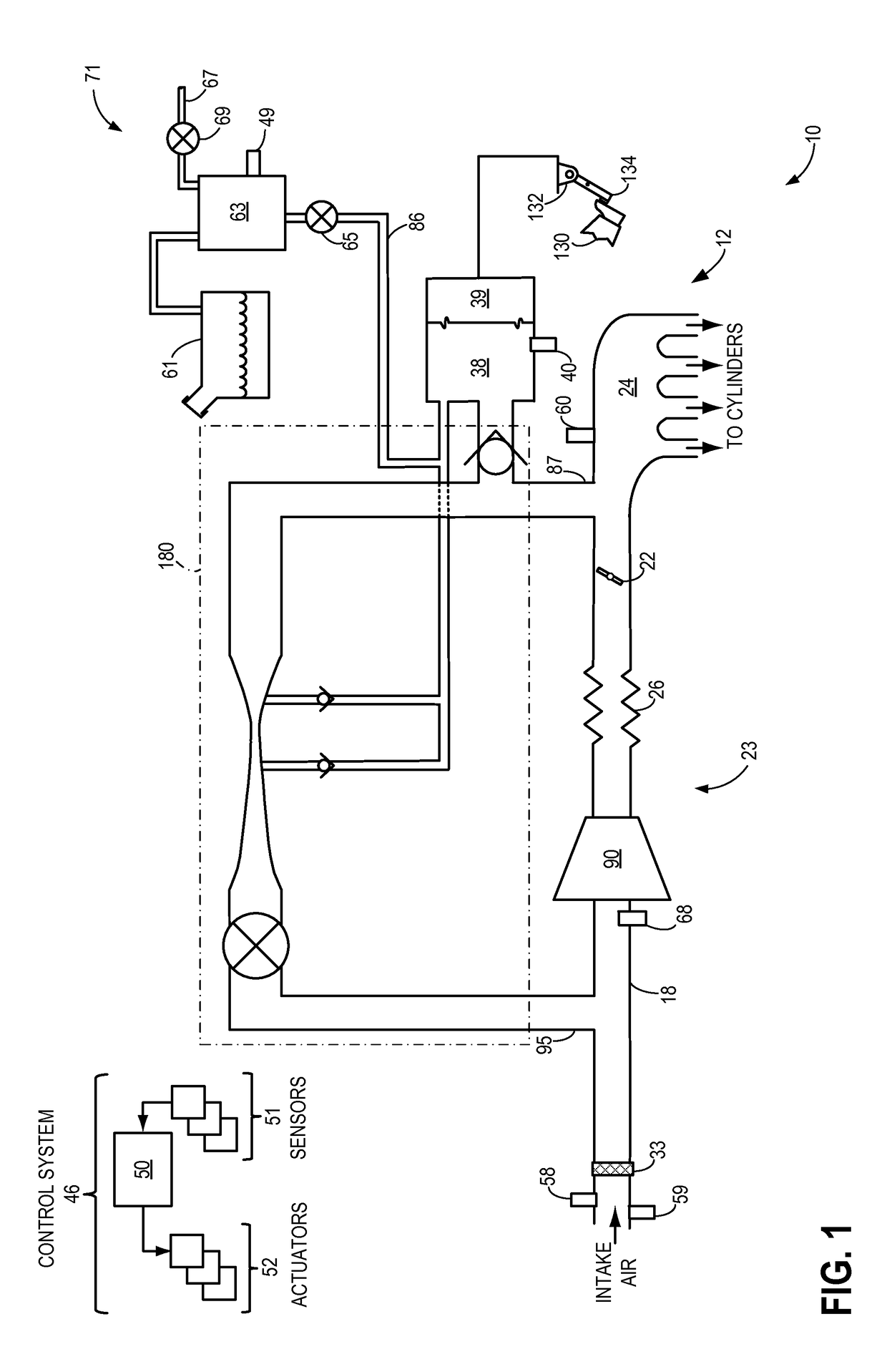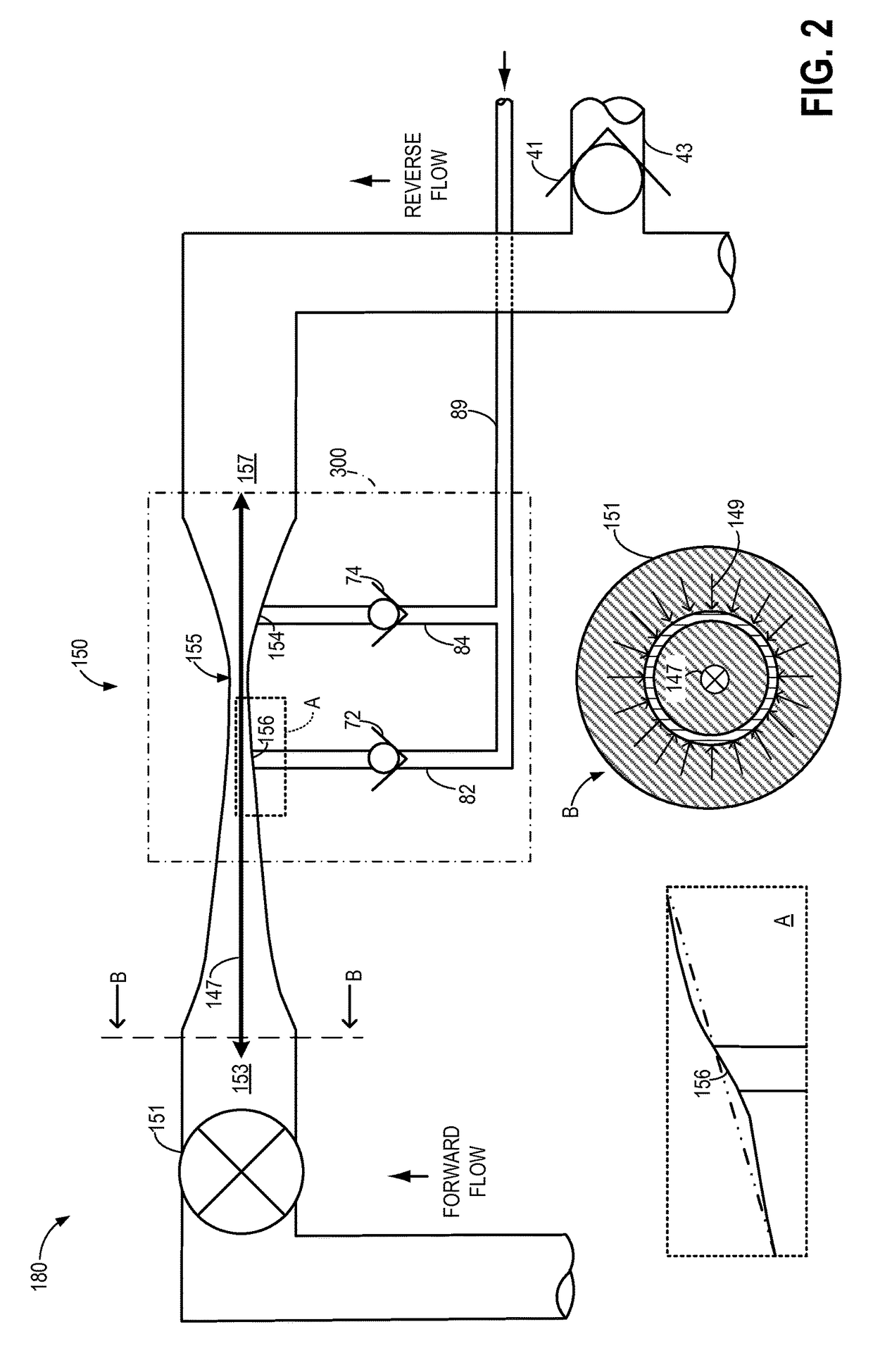Bidirectional valved aspirator for surge control and vacuum generation
a technology of surge control and vacuum generation, which is applied in the direction of combustion-air/fuel-air treatment, machine/engine, fuel air intake, etc., can solve the problems of compressor degradation, incorporated valves, performance issues, etc., and achieve significant component and operating costs, prolong the operating region of the engine, and prevent objectionable audible noise
- Summary
- Abstract
- Description
- Claims
- Application Information
AI Technical Summary
Benefits of technology
Problems solved by technology
Method used
Image
Examples
Embodiment Construction
[0018]Methods and systems are provided for controlling a motive flow rate through a bidirectional valved aspirator bypassing a boost device arranged in an intake of an engine system such as the engine system depicted in FIG. 1. A detail view of an exemplary aspirator which may be included in the engine system of FIG. 1 is provided in FIG. 2, and a detail view of the aspirator of FIG. 2 during boost conditions and non-boost conditions is shown in FIGS. 3A and 3B, respectively. Depending on engine operating conditions, whether throttle fault conditions are present, and whether boost is active, various controls may be enacted to achieved a desired flow rate through a bidirectional valved aspirator (e.g., see the method of FIG. 4). For example, a desired motive flow rate through a bidirectional valved aspirator may be determined in accordance with the method of FIG. 5 during non-boost conditions, and in accordance with the method of FIG. 6 during boost conditions. The desired combined m...
PUM
 Login to View More
Login to View More Abstract
Description
Claims
Application Information
 Login to View More
Login to View More - R&D
- Intellectual Property
- Life Sciences
- Materials
- Tech Scout
- Unparalleled Data Quality
- Higher Quality Content
- 60% Fewer Hallucinations
Browse by: Latest US Patents, China's latest patents, Technical Efficacy Thesaurus, Application Domain, Technology Topic, Popular Technical Reports.
© 2025 PatSnap. All rights reserved.Legal|Privacy policy|Modern Slavery Act Transparency Statement|Sitemap|About US| Contact US: help@patsnap.com



